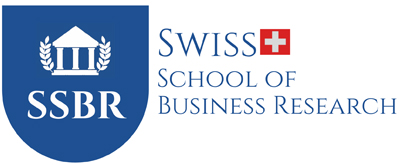The 2020 global pandemic was by far one of the biggest challenges that most businesses had to tackle. Its long term impact on the economy has yet to be revealed and unfortunately, some businesses have collapsed due to the unexpected pressures endured.
However, amongst the catastrophe and devastation that the global economy faced, grew a surge of creativity, innovation and adaptability by many businesses in a variety of sectors. Food outlets diversified, digital art erupted and offices became virtual and streamlined. It didn’t take long to identify those who weren’t going to let Covid bring them down!
Here are 6 ways that Covid 19 has had a positive impact on businesses:
1. It pushed the fast forward button on digital access
The 2020 global pandemic side swiped businesses with no pre-warning that the physical workplace would have to cease operations as they were. This left many organisations faced with a difficult predicament to navigate through and no option but to come up with a new plan to resume trading overnight. From internal communications, connecting to customers to managing supplies, organisations had digitalise rapidly. For most businesses, the shock impact of the pandemic sent them into fight or flight mode…if decisions weren’t made to implement a new way of working based upon an increase in technology usage, the chances are that business wouldn’t survive. In many instances, things that would have traditionally taken months to negotiate or finalise through the old way of working, now take just hours.
2. It provided companies with the perfect opportunity to innovate
The pandemic presented a unique opportunity for businesses to prototype their adapted ways of working in a relatively safe space. There appeared to be a period of global understanding and empathy with the challenges that businesses were facing. Customers were patient, understanding why things had to change and suppliers were seemingly more flexible. Businesses had an opportunity to diversify, introduce new products and explore new markets, with little risk of resistance. This period of instantaneous innovation helped to build confidence among businesses, to introduce change boldly and fearlessly. With evidence of positive results, this should encourage change and diversification to become a constant within company business models.
3. It highlighted the importance of training and upskilling
Remote working in varying degrees, will be here to stay for the foreseeable future. During the initial adjustments resulting from the impact of the pandemic, employees had to adapt quickly to new systems and software. But the most significant change which affected most, was communication in general. Some people settled well into a virtual communication space, where others have struggled to get on board with the concept. Employers have a duty to support their staff through such changes and allow time to allocate for personal development. Essentially in order for a business to survive and thrive in a post covid world, everyone within the organisation has to continually improve upon their digital communications skills. Many businesses are now updating their training packages to reflect the needs of today’s business operations in order to protect the growth of the company, alongside the wellbeing of staff.
4. It’s seen a rise in productivity levels
Prior to the pandemic, the idea of offering a ‘working from home’ option to employees was often viewed unfavourable and if granted, would come with strict conditions. The idea that employees would be too relaxed, become lazy and be distracted by things around the home as opposed to fulfilling work obligations was overlooked by; the time saved travelling commuting, reduced distractions and the effectiveness of virtual meetings. Although faced with challenges, working from home, and communicating digitally have produced better productivity results than anyone could have expected.
5. It’s allowed businesses to save money
Due to the unprecedented nature of the pandemic and the lingering uncertainty around the lasting effects, leaders and leadership teams took a hard look at their books, reevaluated spending and made adjustments to their cash flows, in order to prepare for any potential financial impacts from COVID. In the short term, it was safe to predict that at the very least consumer spending patterns and purchasing activities would alter significantly. For the long term…well, it was near impossible to call! For many businesses this triggered a ‘spring clean’ of the company accounts and a pull back on spending. Although installing new ways of working hasn’t come without cost, including investment into new digital systems, communication platforms and home set up for staff. Many businesses experienced vast savings from not having to pay daily operating costs of offices or travel expenses.
6. It encouraged a stronger sense of community
In some instances, working remotely and being situated away from the traditional office has been a positive experience. Socialising virtually with colleagues has become more accessible to those who may have commitments outside of work, or live in a remote area. Many employees feel their work-life balance is healthier and their general well-being has noticeably improved. Being more present at home has encouraged people to establish or enhance relationships with neighbours and others within the local vicinity. Being part of a community is essential for good all-around mental health.
SSBR’s degree programmes are fully digital, innovative, and taught by a professionally active faculty who teach business principles through real-world examples. We aim to prepare students for the reality of business with a transferable set of skills and the confidence to excel in any unpredictable situation.
Applications for our September 2021 intake are now open for our Bachelor, Master and Doctorate business degrees.
Contact one of our helpful admissions if you have any queries or concerns about starting a degree post-pandemic, or for any general questions about our programmes:
Email: info@ssbr-edu.ch
Insta: @swissschoolofbusinessresearch
Facebook: @swissschoolofbusinessresearch

